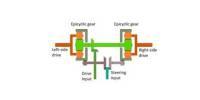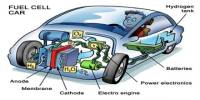Around 15% of the energy used worldwide is for cooling. Ordinary clear windows let the sun heat up interior rooms, which must subsequently be cooled down by energy-hungry air conditioners.
But what if a window could help cool the room, use no energy and preserve the view?
Tengfei Luo, the Dorini Family Professor of Energy Studies at the University of Notre Dame, and postdoctoral associate Seongmin Kim have devised a transparent coating for windows that does just that.
The coating, also known as a transparent radiative cooler (TRC), lets in visible light while blocking out other light that generates heat. In comparison to traditional glass windows, the researchers believe that this technology can save electric cooling expenses by one-third in hot areas.
To help with climate change concerns, transparent radiative coolers can be utilized in buildings and automobiles. The best-in-class TRC was created by Luo and his colleagues combining machine learning and quantum computing.
The construction of the TRC requires the exact assembly of numerous ultra-thin layers of materials. Researchers were able to quickly test every potential configuration of layers to determine the ideal mix and arrangement of materials by building a computational model of the TRC.
These findings served as their guide, and they created the new coating by layering silica, alumina, and titanium oxide on a glass base and then covering it with a contact lens-making polymer. A 1.2 micron-thick coating that outperforms all other heat-reducing glass coatings on the market was created as a result.
“I think the quantum computing strategy is as important as the material itself,” said Luo. “Using this approach, we were able to find the best-in-class material, design a radiative cooler and experimentally prove its cooling effect.”
Their research was published in ACS Energy Letters, a journal of the American Chemical Society.
















